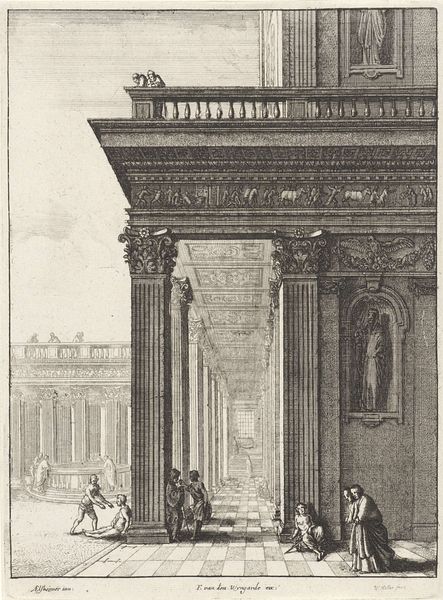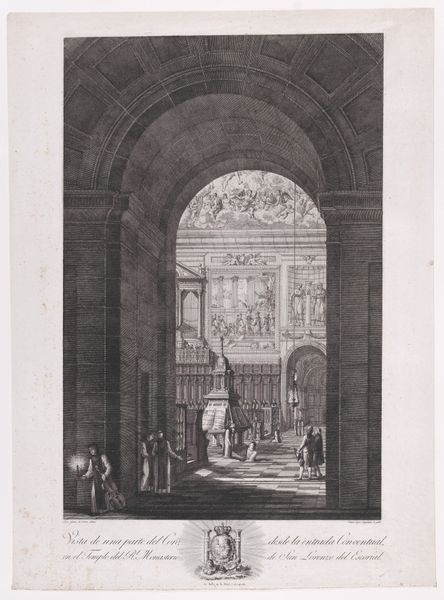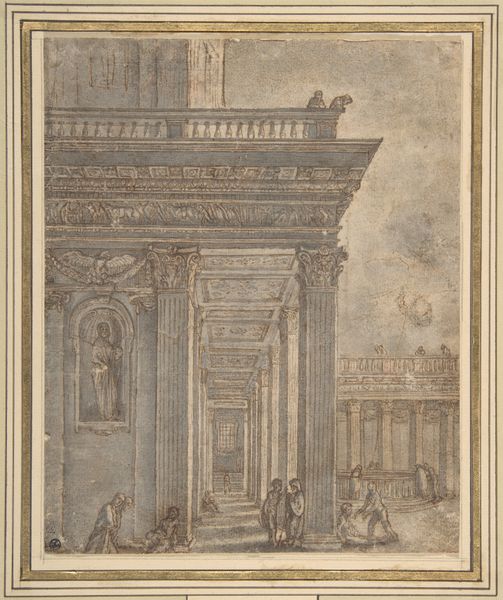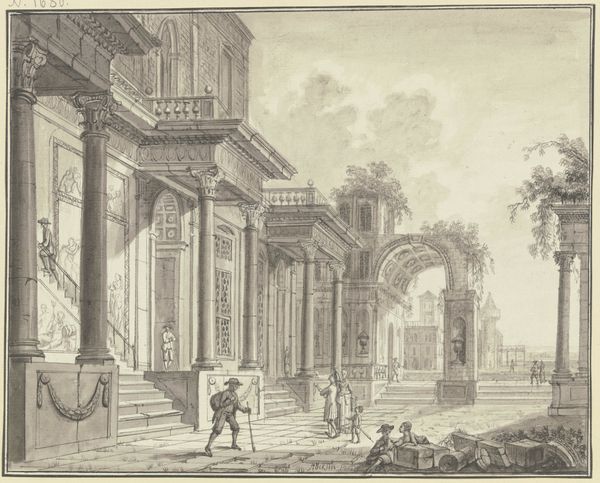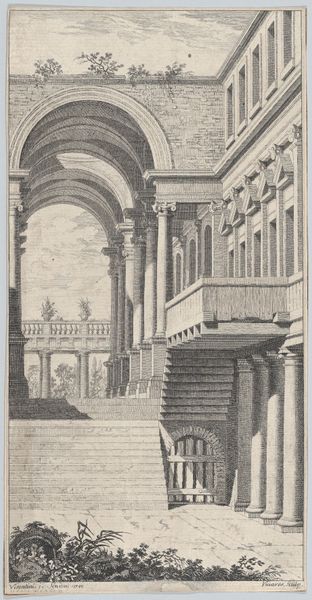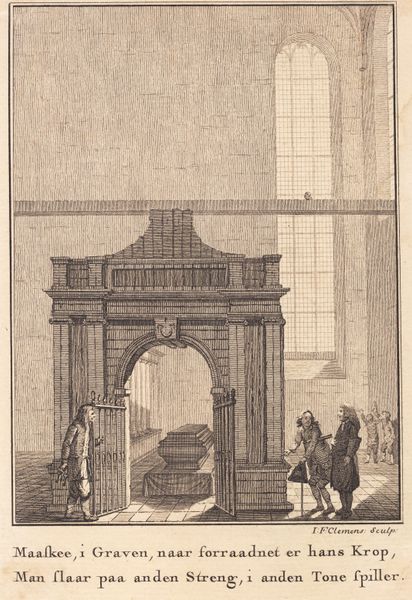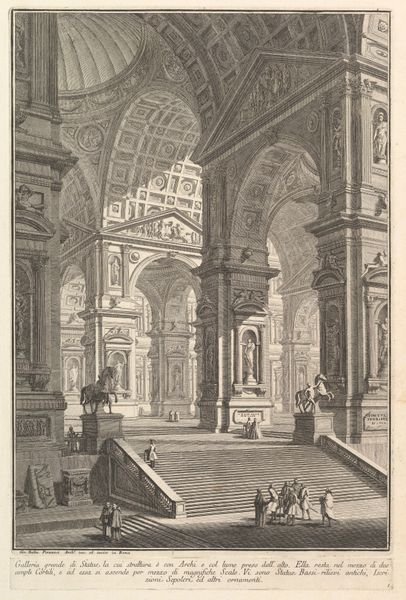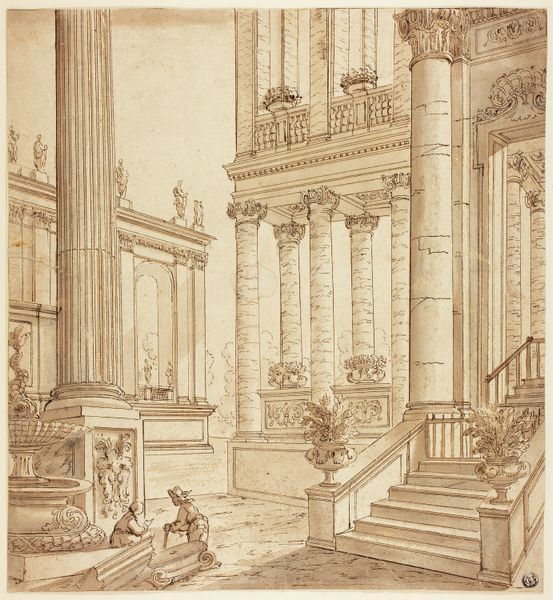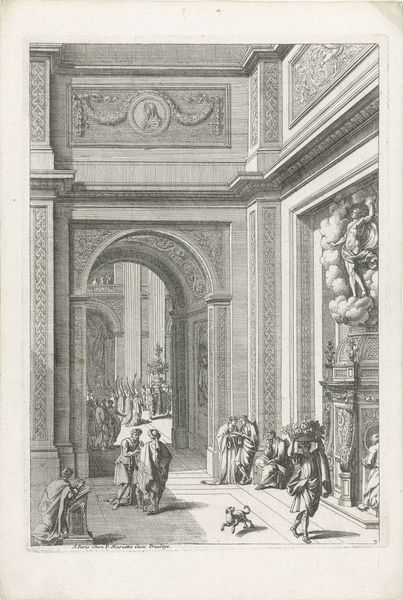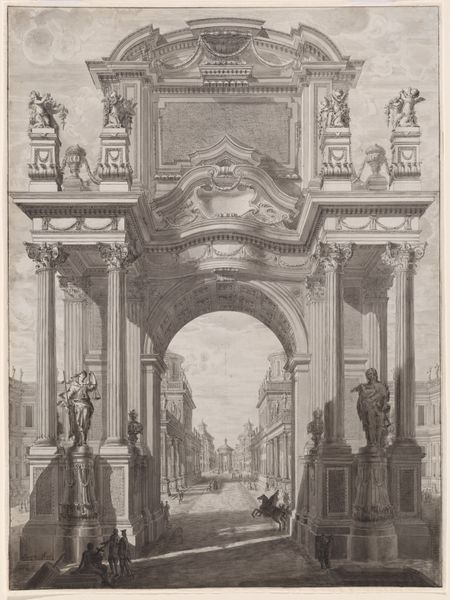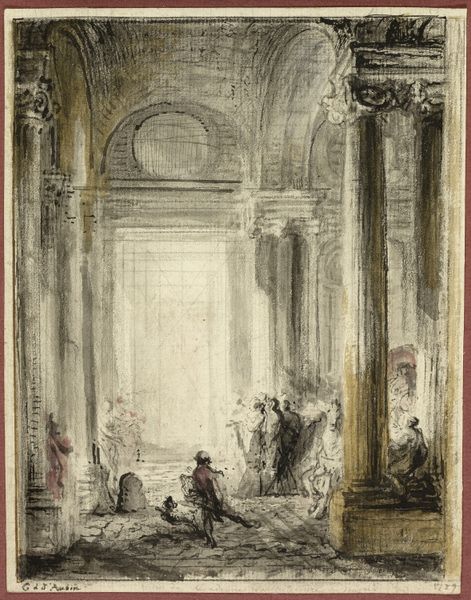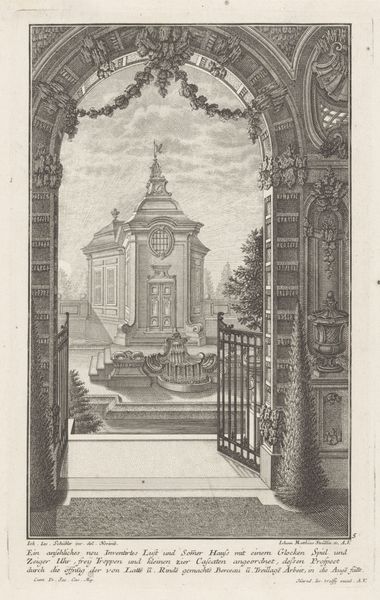
Temple colonnade and courtyard with figures 1644 - 1652
0:00
0:00
drawing, print, etching, engraving
#
drawing
#
baroque
# print
#
etching
#
landscape
#
cityscape
#
engraving
Dimensions: Sheet: 8 11/16 × 6 7/16 in. (22 × 16.3 cm)
Copyright: Public Domain
This print of a Temple Colonnade, made by Wenceslaus Hollar in the 17th century, shows the artist’s skill with etching, a printmaking technique that relies on the corrosive action of acid to create lines on a metal plate. Looking closely, you can see that Hollar has used a variety of marks to create a sense of depth and texture. The dense, dark lines in the foreground contrast with the finer, lighter lines in the distance, drawing the eye through the courtyard. The architectural details are rendered with precision, the artist's hand capturing the textures and details of stone and light. Hollar was a prolific printmaker, known for his detailed depictions of architecture and landscapes. In his time, prints like this were luxury items, catering to wealthy patrons who collected images of classical antiquity. The labour-intensive process reflects a society where skilled craftsmanship was highly valued. Considering the material and the making of this print opens a window onto a world of artistic skill, historical context, and the appreciation of craft as a form of cultural capital.
Comments
No comments
Be the first to comment and join the conversation on the ultimate creative platform.
